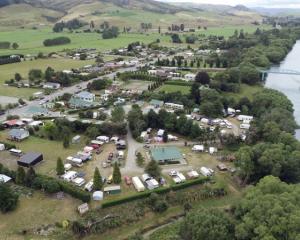Just before darkness fell yesterday, a team of University of Otago and Otago Museum staff removed the sixth of seven footprints from the Kyeburn River.

They had been working at the site since Wednesday with the help of contractors.
Last night the prints, each about 30cm by 30cm, were on their way to the museum.
Museum director Ian Griffin said the main feeling last night was exhaustion.
"It's an amazing thing. I'm extremely proud of what we've achieved."
The seventh footprint was left at the site, as it proved challenging to move.
"It was in a really difficult position and was damaged already."
A drone with a 3-D scanner had surveyed the site so a detailed image of how they looked before excavation could be digitally preserved.
The footprints were found in early March by Ranfurly man Michael Johnston while taking his dogs for a swim.
University geology professor Ewan Fordyce said it felt like a "job well done".
The prints were unusual in that they preserved the behaviour of an animal, rather than a skeleton, he said.
While they had not yet been examined, his department believed they were between three million and four million years old.
They pre-date the last ice age, when the Kakanui Ranges near the site were not formed and the Southern Alps were probably in the early stages of development.
They are the only moa footprints found in the South Island.
Carefully removing the fossilised footprints proved more painstaking than expected and was not helped by rain on Thursday night.
Using a digger, along with large and small water pumps, the team finally managed to cut away the prints yesterday, one by one.
Waist deep in water, they used concrete saws, chainsaws and hammers to remove each specimen.
Specimens were then placed on pieces of plywood and covered to protect them from sunlight.
The pieces will now go into isolation spaces at the museum.
There, its conservation manager will determine what to do with them next and how to get them on display.












